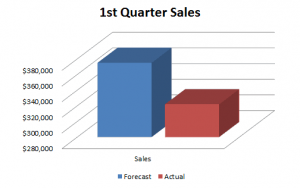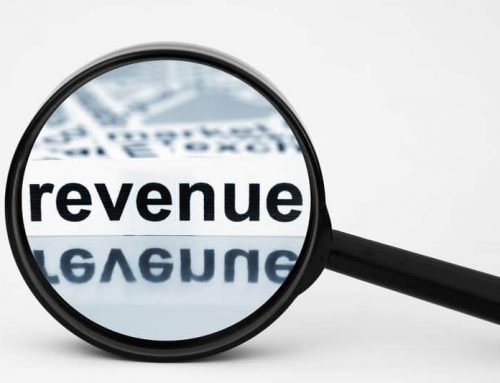Reviewing financial statements begins during your business planning process. The last step of your business planning should be developing your financial budget. Your budget establishes the financial targets your team should focused on achieving as you execute your business plan.
Problem is less than half of the business owners I meet with have a written budget. If you don’t have a budget, then how do hold others accountable to your financial targets? Are you starting to see WHY you need a budget?
Budgeting Simplified
Many owners don’t create a budget because they’ve been incorrectly taught . Let me ask you, how do you create a budget before you define what you want to accomplish?
This is why I advocate high impact business planning. It makes you think through your goals and objectives first. Then makes the functional manager responsible for those objectives think about how they plan to achieve them. Now budgeting becomes easy, you just estimate how much money to you need to accomplish the work defined!
Now, you have set a benchmark from which to review your performance. You don’t need all the detail to know if you are performing well or are off track in less than 2 minutes of reviewing your financial statements. You just need to use 4 key numbers:
- Forecasted revenue
- Cost of goods sold (COGS) as a % of revenue
- Overhead expenses as a % of revenue
- Expected net profit as a % of revenue
Reviewing Financial Statements Simplified
 With the actual values of these 4 numbers reviewing financial statements is easy! Just compare your actual values for the current period to these same percentages from your budget. If they are within the acceptable margin that you set as the business owner, your financial review is complete. It really is that easy!
With the actual values of these 4 numbers reviewing financial statements is easy! Just compare your actual values for the current period to these same percentages from your budget. If they are within the acceptable margin that you set as the business owner, your financial review is complete. It really is that easy!
Now, isn’t that simpler than the process your CPA wants you to follow? Why follow this simple process? Because, if your numbers fall within these percentages you set in your budget then you’ll reach your annual financial goals.
So, why spend hours analyzing the numbers? Because that’s what accountants do, and your CPA is an accountant.
Successful entrepreneurs spend that time looking for more opportunities to sell their product/service or looking at ways to scale their business. So, start acting like a successful entrepreneur!
When Reviewing Financial Statements Gets Tougher
For example, let’s say your COGS percentage is 43% and your target is 38%. You should be asking yourself, why the 5% increase?
 Now all the financial accounting your accountant did for you comes into play. You’d look at the detailed accounts under your COGS section in your P&L to see what’s higher than it should be. Is it labor or materials? Then drill into this to see what caused your 5% increase. Was it a onetime anomaly or has something changed for good? Maybe a vendor increased their pricing on you.
Now all the financial accounting your accountant did for you comes into play. You’d look at the detailed accounts under your COGS section in your P&L to see what’s higher than it should be. Is it labor or materials? Then drill into this to see what caused your 5% increase. Was it a onetime anomaly or has something changed for good? Maybe a vendor increased their pricing on you.
So, there you have it. A quick and simple way for reviewing financial statements. Could you take 5 minutes a month to do this? If people know you’re watching, then they’ll become more conscience of what they’re spending. This is what creates accountability in your business, and when this happens hitting your financial goals gets even easier.
If you’d need more help setting your budgeting or evaluating your financials let me know. My passion is helping small business owners to become independent and financially free. It doesn’t take long to figure out what’s happening when you use this process for reviewing financial statements.






[…] get things setup for reading your financial statements this way read the post What to Look for When Reviewing Financial Statements. This goes into a little more detail on the […]